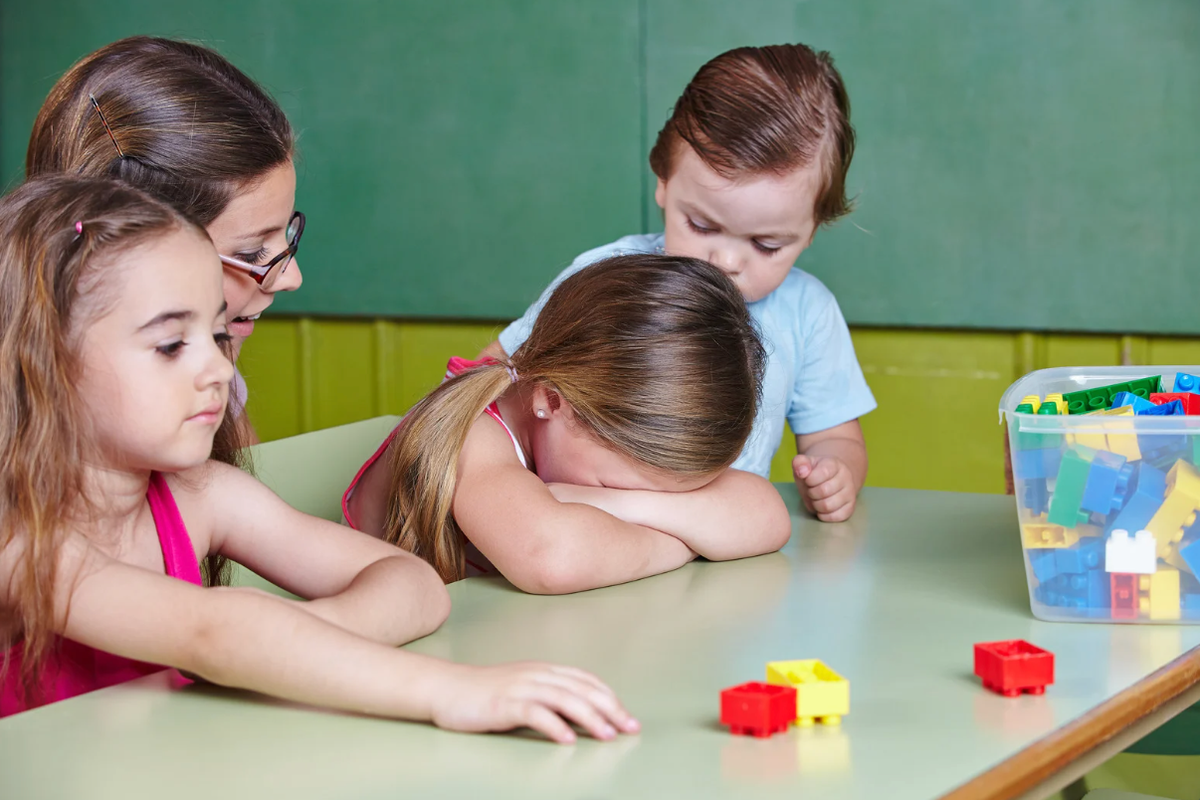Child psychologist begs parents to break these 6 common but harmful habits for their kids
Grandparents should give this a read, too.
A kid with their head down in class.
From the time they're aware of the pregnancy, couples make strenuous efforts to plan their parenting. Right from the diet, morals, school and lifestyle choices, parents leave no stone unturned in opting for what's best. Some of these practices may be influenced by parents' beliefs, lifestyles, skills and so on. However, not all may be beneficial and recommended for children. Practices that may seem great initially can have unwanted long-term effects. Child psychologist Dr. Roseann Capanna-Hodge revealed 6 striking habits you want to keep out of your child's life, per Parade. She urges parents and grandparents to leave out these 6 factors and find alternatives that are more fruitful and efficient.
1. Using screentime to keep kids busy

It’s no secret that screens are a lifesaver when parents are exhausted, cooking dinner, or juggling work and childcare. But relying on them too often comes with downsides.
A 2023 Common Sense Media report found that children ages 0–8 now average over 2.5 hours of screen use per day, more than double what it was a decade ago. Research shows this can affect attention span, sleep, mood regulation, and social development.
“Children need a variety of play-based activities that foster growth in areas like visual-motor skills, physical exercise, and socialization,” Capanna-Hodge explains. And when screens become a default soother, it can also crowd out precious bonding moments.
Try instead:
✔ Create a 5-minute “connection ritual” at meals or bedtime (a story, a silly rhyme, a question of the day).
✔ Keep a small “quiet kit” nearby — crayons, fidget toys, or mini puzzles.
2. Forgetting that kids learn by watching us

Kids absorb far more from what we do than what we say. When adults argue harshly, shut down emotionally, or treat others disrespectfully, children internalize those patterns.A 2023 Child Development study found that children’s emotional regulation skills strongly reflect the emotional modeling they see at home.Capanna-Hodge stresses that when conflicts happen—and they will—how parents respond matters. “Demonstrating respectful conflict resolution sets a powerful example,” she notes.Why parents fall into this:Small homes mean no private space. Stress runs high. Many adults are still unlearning the conflict habits they grew up with.
Try instead:
✔ Narrate your emotions: “I’m frustrated, so I’m taking a breath.”
✔ If conflict starts escalating, say out loud: “Let’s pause and try again later.”
3. Letting negativity become a pattern

When you combine the financial stress, sleep deprivation, and the expectations of “doing it all" that comes with modern day parenting, patience wears thin, fast. But frequent yelling or criticism can shape a child’s sense of safety and self-worth.“Regularly raising your voice creates an environment of fear, anxiety, and poor stress management,” Capanna-Hodge says.
Try instead:
✔ Use a whisper voice (kids actually tune in more).
✔ Step away for 10 seconds before responding.
✔ Offer specific praise: “You tried really hard on that.”
4. Using guilt to influence behavior

Guilt-based language often comes from older generational patterns. Many grandparents grew up hearing, “After all I’ve done for you…” and simply repeat what they know. But today’s research is clear: guilt-based parenting can stick with children for life.Multiple studies link guilt-inducing messages to anxiety, people-pleasing, and low autonomy later on.Phrases like “Grandma will be so upset if you don’t…” don’t build responsibility. They build shame.
Try instead:
✔ Teach accountability: “How can we fix this together?”
✔ Validate feelings while redirecting behavior: “You’re upset AND we still need to clean this up.”
5. Inconsistency with rules and discipline

Many parents worry their kids don’t listen, but the issue is often inconsistency, not disobedience. Kids learn best from predictable boundaries.
“Inconsistent rules create confusion and insecurity,” Capanna-Hodge says. Research on children with ADHD shows that harsh or inconsistent parenting is linked with more behavior problems, while consistent routines predict better emotional and behavioral outcomes—especially for kids who struggle with attention or self-regulation.
Try instead:
✔ Post simple, predictable rules on the fridge.
✔ Use the same consequence each time for the same behavior.
✔ Build a short daily rhythm: snack → play → cleanup → bedtime.
6. Comparing kids to each other
Comparison often comes from anxiety. Parents worry their child is “behind” or not meeting milestones. But comparison undermines a child’s confidence and can spark resentment or pressure to overperform.“When grandparents openly compare grandchildren, it diminishes a child’s sense of self-worth,” Capanna-Hodge says. Each child needs space to grow on their own timeline.Try instead:✔ Celebrate individuality: “You’re so curious!” You’re great at building!”
✔ Focus on progress, not peers.
Here’s the hopeful part: none of these negative habits define you as a parent. Every adult slips into patterns they wish they could change. What matters most is noticing, adjusting, and reconnecting. Small shifts, practiced over time, create lifelong impact. And every day is another chance to choose connection over perfection.
This article originally appeared 3 months ago.


